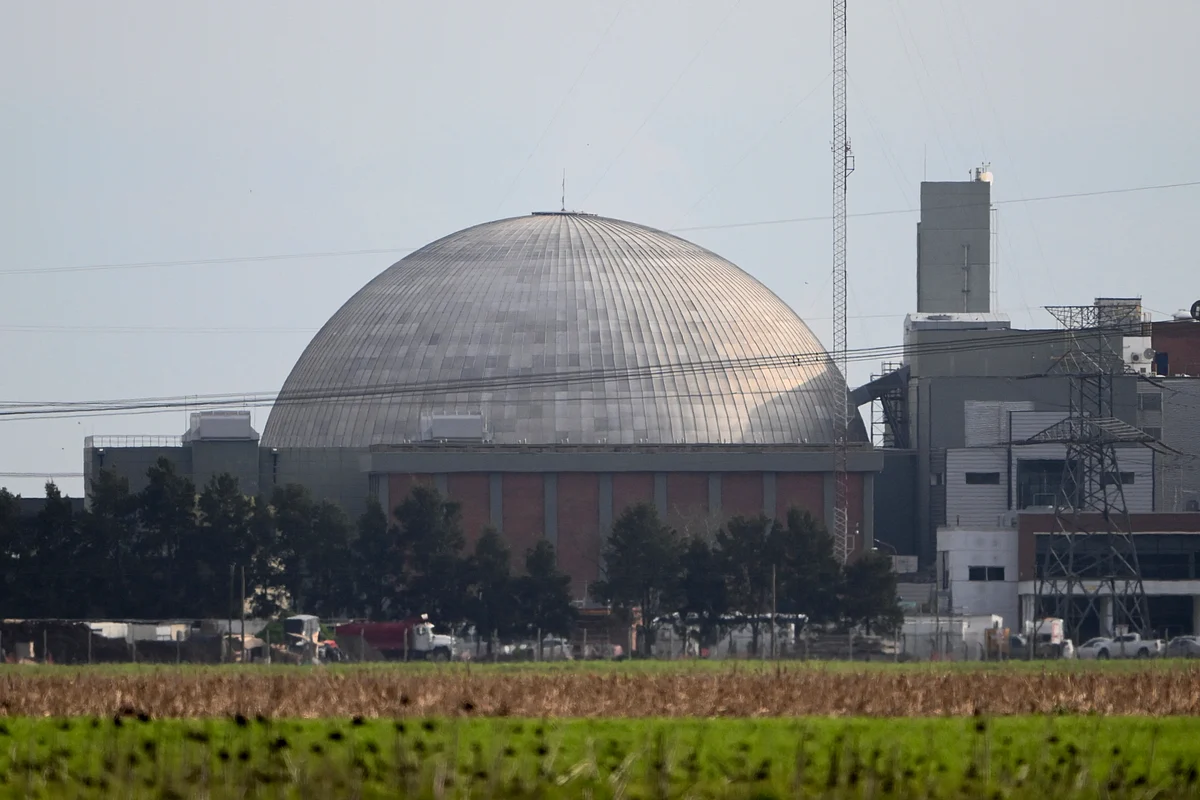AI Boom Sparks Nuclear Stock Frenzy Amid Policy Tailwinds
A new wave of investor enthusiasm is sweeping through nuclear energy stocks, driven by surging demand from artificial intelligence and a flurry of supportive policy moves in Washington and London.
Shares of advanced nuclear developers have skyrocketed. Oklo has soared more than 1,000 per cent over the past year, including a 63 per cent jump last week alone. NuScale gained 26 per cent, while Nano Nuclear rallied nearly 40 per cent. Uranium producers joined the rally, with Cameco and Uranium Energy both up more than 10 per cent.
Recommended For YouThe catalysts are clear: the US and UK unveiled a new nuclear partnership, the White House announced plans to fast-track licensing and fuel security, and the Department of Energy launched pilot programmes aimed at accelerating deployment. Meanwhile, investors are waking up to the power demands of AI. US data centers alone could triple their share of electricity consumption to 8.6 per cent by 2035, according to recent estimates.
“It's a rare confluence of policy momentum and technological pull,” said Jacob Falkencrone, Global Head of Investment Strategy, Saxo Bank. But not everyone is buying the rally. Oklo's CFO has filed to sell \$9 million worth of stock, and Fluor, NuScale's largest shareholder, has been trimming its stake-signs that valuations may be running ahead of construction timelines.
Why AI is driving nuclear's revival
The nuclear resurgence is less about ideology and more about physics. AI workloads are pushing electricity demand to unprecedented levels. The International Energy Agency warns that global data centers could consume as much power by 2030 as Japan does today.
Renewables alone can't meet that demand. Nuclear offers a unique value proposition: carbon-free, 24/7 baseload power with uptime exceeding 90 per cent-far above wind, solar, or gas.
Tech giants are taking notice. Google has committed to sourcing nuclear power for AI operations, Microsoft is exploring the reopening of shuttered plants, and Meta has partnered with Constellation Energy. While these projects are still in early stages, they signal a growing alignment between Silicon Valley and the nuclear industry.
“AI has made nuclear relevant again because it's one of the few sources that can run flat-out, 24/7, for decades,” said Falkencrone.
The promise - and pitfalls - of small reactors
Much of the excitement centres on small modular reactors (SMRs) and microreactors - compact designs intended for factory production and rapid deployment. Dozens of startups are pursuing these technologies in the US and Europe, while China has already begun rolling out its first units.
The pitch is compelling: lower costs, faster timelines, and flexible siting. But the economics remain unproven. No SMR has yet been completed in the US, and first-of-a-kind projects often face delays and budget overruns. Licensing hurdles persist, fuel supply chains are immature, and without binding offtake agreements, financing remains elusive.
A scarce but growing investment universe
Investor interest is amplified by scarcity. Oklo, NuScale, and Nano Nuclear are the only pure-play developers currently listed in the US, all via SPAC mergers - a structure that has disappointed in many sectors but delivered outsized returns here.
More names are lining up. Terra Innovatum, Terrestrial Energy, and Eagle Energy Metals are preparing SPAC listings this year, each with a distinct approach - from molten salt reactors to hybrid mining-development models. But all remain years from commercial viability.
For more risk-averse investors, regulated utilities extending the life of existing plants offer steadier returns. Uranium producers and enrichment firms stand to benefit from efforts to reduce reliance on Russian supply. Engineering and component suppliers may emerge as the“picks and shovels” winners of the nuclear build-out.
Risks that could derail the rally
Despite the optimism, nuclear remains a high-risk sector:
-p Construction risk: Cost overruns average more than 100 per cent.-p
Regulatory risk: Licensing remains slow and politically sensitive.-p
Community resistance: Local opposition has derailed projects before.-p
Supply-chain fragility: Enrichment capacity is still heavily reliant on Russia.-p
Market psychology: Insider selling suggests caution even among industry leaders.What investors should watch
Key milestones will determine whether the rally has legs: binding offtake agreements with transparent pricing, regulatory progress on design certification and site permitting, secured fuel supply, and credible financing packages. Most importantly, later units must be delivered faster and cheaper than the first.
The coming months will be pivotal. The Department of Energy is set to announce pilot awards, state legislatures in Illinois and New York are debating moratoria on new plants, and several nuclear SPACs face shareholder votes. The first credible SMR construction starts in North America could be a turning point.
Bottom line
The nuclear rally is being driven by three converging forces: AI's insatiable appetite for electricity, a friendlier policy environment, and a scarcity of investable names. But this is also an industry where hype often outruns hardware.
For investors, balance is key. Uranium producers and regulated operators offer lower-risk exposure, while SMR developers and SPACs are high-beta bets. The smartest strategy may be to watch milestones - not headlines - and treat nuclear as a long-duration story, not a short-term trade.

Legal Disclaimer:
MENAFN provides the
information “as is” without warranty of any kind. We do not accept
any responsibility or liability for the accuracy, content, images,
videos, licenses, completeness, legality, or reliability of the information
contained in this article. If you have any complaints or copyright
issues related to this article, kindly contact the provider above.
Most popular stories
Market Research

- New Cryptocurrency Mutuum Finance (MUTM) Raises $15.8M As Phase 6 Reaches 40%
- Bydfi Joins Korea Blockchain Week 2025 (KBW2025): Deepening Web3 Engagement
- Yield Basis Nears Mainnet Launch As Curve DAO Votes On Crvusd Proposal
- 0G Labs Launches Aristotle Mainnet With Largest Day-One Ecosystem For Decentralized AI
- Ethereum-Based Defi Crypto Mutuum Finance (MUTM) Raises Over $16 Million With More Than 720M Tokens Sold
- Fintech's Gender Gap In Focus: Drofa Comms' Women Leading The Way Joins Evolvh3r's She Connects At TOKEN2049





















Comments
No comment